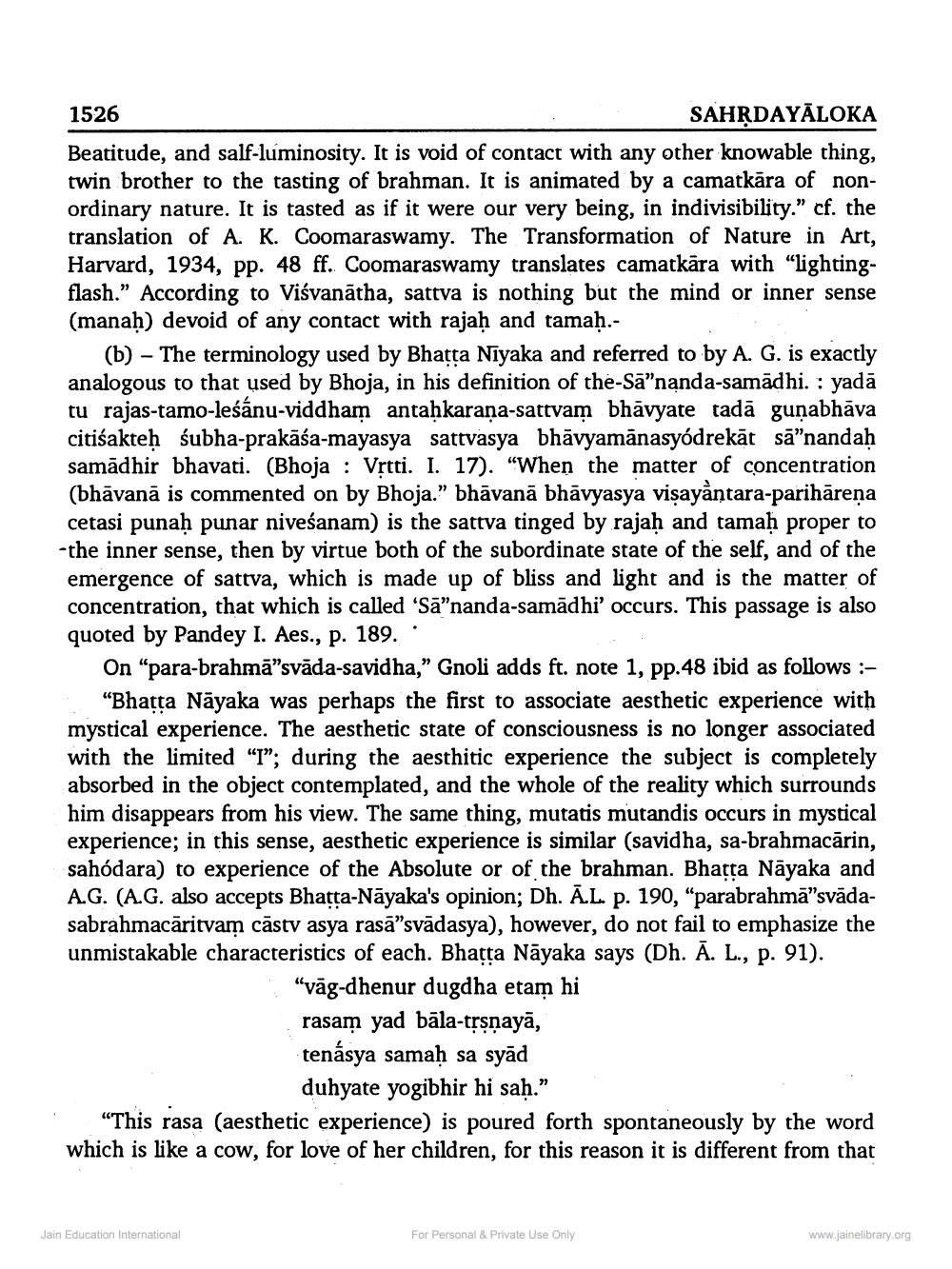________________
1526
SAHRDAYĀLOKA Beatitude, and salf-luminosity. It is void of contact with any other knowable thing, twin brother to the tasting of brahman. It is animated by a camatkāra of nonordinary nature. It is tasted as if it were our very being, in indivisibility." cf. the translation of A. K. Coomaraswamy. The Transformation of Nature in Art, Harvard, 1934, pp. 48 ff. Coomaraswamy translates camatkāra with "lightingflash." According to Viśvanātha, sattva is nothing but the mind or inner sense (manah) devoid of any contact with rajaḥ and tamaḥ.
(b) - The terminology used by Bhatta Niyaka and referred to by A. G. is exactly analogous to that used by Bhoja, in his definition of the-Sā”nanda-samādhi. : yadā tu rajas-tamo-leśánu-viddham antahkarana-sattvam bhāvyate tadā gunabhāva citiśakteh śubha-prakāśa-mayasya sattvasya bhāvyamānasyodrekāt sā”nandah samadhir bhavati. (Bhoja : Vrtti. I. 17). "When the matter of concentration (bhāvanā is commented on by Bhoja.” bhāvanā bhāvyasya visayảntara-parihāreņa cetasi punah punar niveśanam) is the sattva tinged by rajah and tamah proper to -the inner sense, then by virtue both of the subordinate state of the self, and of the emergence of sattva, which is made up of bliss and light and is the matter of concentration, that which is called 'Sā"nanda-samadhi' occurs. This passage is also quoted by Pandey I. Aes., p. 189.
On “para-brahmā"svāda-savidha,” Gnoli adds ft. note 1, pp.48 ibid as follows :: “Bhatra Nāyaka was perhaps the first to associate aesthetic experience with mystical experience. The aesthetic state of consciousness is no longer associated with the limited "T"; during the aesthitic experience the subject is completely absorbed in the object contemplated, and the whole of the reality which surrounds him disappears from his view. The same thing, mutatis mutandis occurs in mystical experience; in this sense, aesthetic experience is similar (savidha, sa-brahmacārin, sahodara) to experience of the Absolute or of the brahman. Bhatta Nāyaka and A.G. (A.G. also accepts Bhatta-Nāyaka's opinion; Dh. A.L. p. 190, “parabrahmā"svādasabrahmacāritvam cāstv asya rasā”svādasya), however, do not fail to emphasize the unmistakable characteristics of each. Bhatta Nāyaka says (Dh. Ā. L., p. 91).
"vāg-dhenur dugdha etam hi rasam yad bāla-trşņayā, tenásya samaḥ sa syād
duhyate yogibhir hi sah.” "This rasa (aesthetic experience) is poured forth spontaneously by the word which is like a cow, for love of her children, for this reason it is different from that
Jain Education International
For Personal & Private Use Only
www.jainelibrary.org




